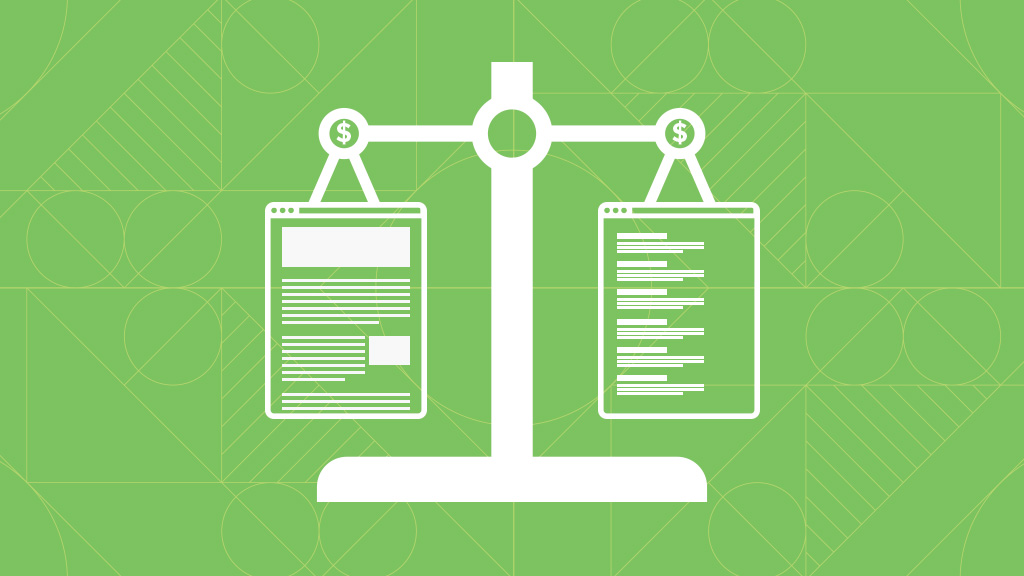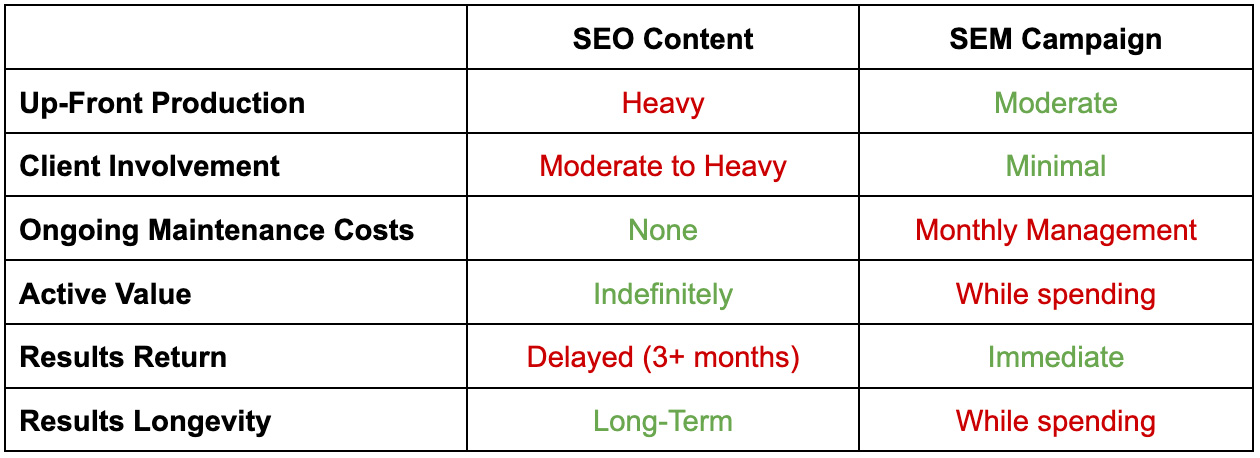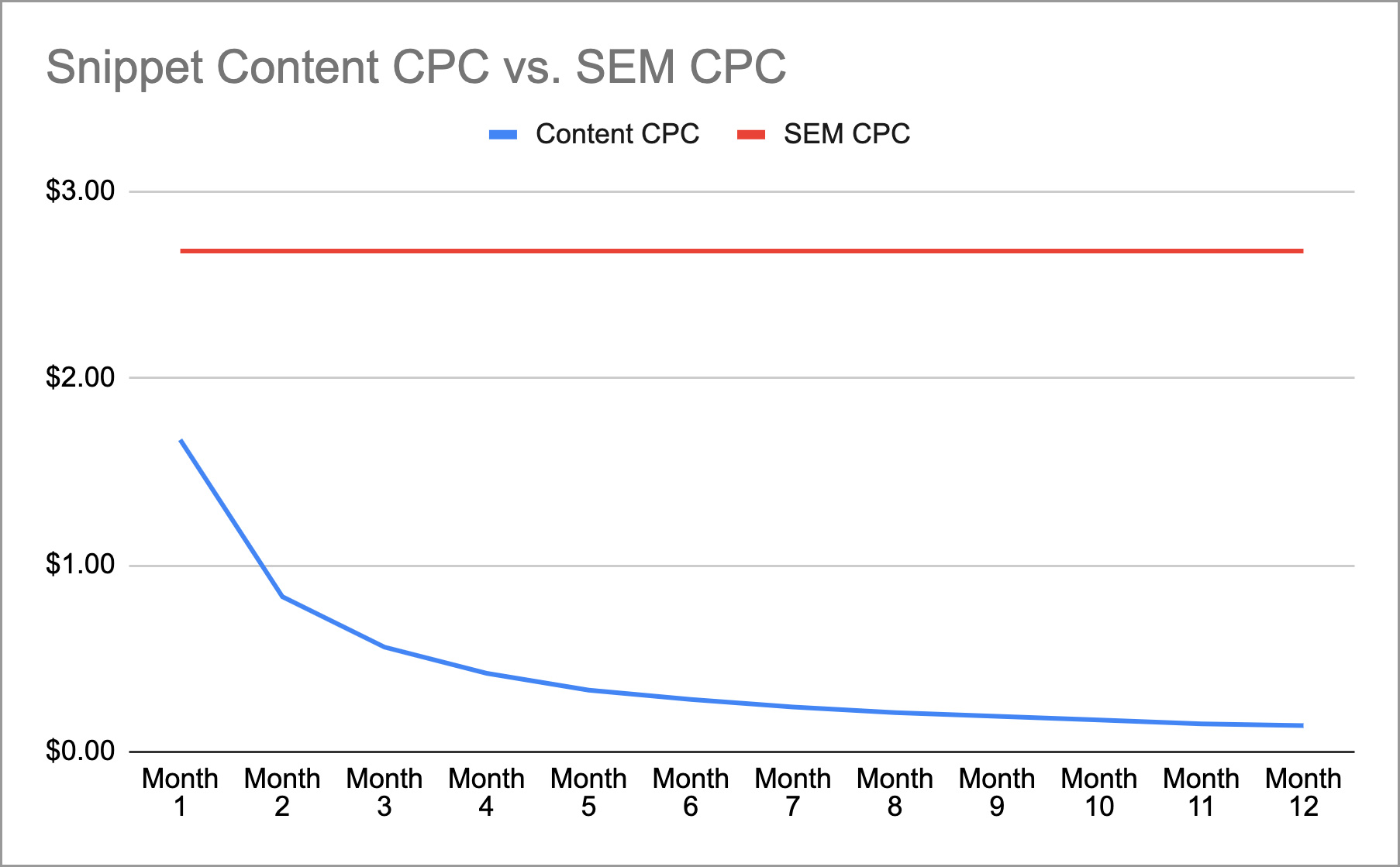 Let’s be honest. When it comes to marketing, there is always an upfront cost to strategy, creative, and management of campaign efforts. Beyond that realization is the real question, what investment in time and money makes the most sense to prioritize over others? This largely depends on the type of organizational goals you have in conjunction with your available budget.
Let’s be honest. When it comes to marketing, there is always an upfront cost to strategy, creative, and management of campaign efforts. Beyond that realization is the real question, what investment in time and money makes the most sense to prioritize over others? This largely depends on the type of organizational goals you have in conjunction with your available budget.
We’re picking two of the most polarizing tactics to illustrate the usage and value of widely different tactics. First, SEM, the hare of the digital marketing world. And second, content marketing, the tortoise.
Before we get too far into the comparison, it should be emphasized that this article is not a direct argument for one tactic over another. Ideally, in any digital marketing plan, multiple channels and tactics should be executed at the same time. But if constraints such as timeline, goals, and budget come into play, it’s helpful to understand the value of organic vs. paid tactics and what the short-term and long-term returns are on each.
Search Engine Marketing
Search Engine Marketing (SEM) is a paid inbound marketing tactic to earth search traffic for keywords your website may or may not rank for, but you want to create the best chance for capturing clicks. Typically this is a tactic that pairs well with SEO as a way to fill performance gaps for low organic keywords while they improve ranking overtime. This is additionally a way to “own the first page” by bidding on keywords you already rank for to provide multiple click opportunities in first-page results.
SEM is a great inbound traffic generator, but it comes with costs. This tactic literally costs money to be active and perform or it stops. Initially there is a cost to create the graphics and copy necessary to populate the ad group. Next is the ongoing management costs for professionals, like our digital marketing team, to set up, monitor, optimize and report on the performance of the campaign(s) on a monthly basis. There is also some inconsistency in costs related to ad spend that are affected by the competition for the keywords targeted, your overall budget, and quality of the ads and landing pages you are using as destinations for your ad groups.
The biggest benefit of SEM is that it has an immediate and predictable effect on generating inbound traffic. This is why it’s such a good compliment to an organic SEO strategy that takes time to start performing. The biggest detractor for this tactic though, is that if you stop advertising, all activity also stops and there is no long-term value. It is a very effective short-term and ongoing approach when active.
Content Marketing
Content marketing is the exact opposite of SEM in almost every way. Content marketing is developing website pages, blog articles, and downloadable resources that provide value to your website visitors. This tactic is commonly implemented alongside an SEO initiative, if not at the start, then within the first year in a supporting role. It also happens to be a great brand builder, sales support tool, and customer support tool as most content is developed around an audience pain point that your organization can help answer and guide readers through.
Content marketing is another great inbound traffic generator. When high quality content is consistently published on a website, it continually opens doors to growing inbound traffic through high quality search rankings.
Content takes a noticeable effort up front to produce. It may be the most time consuming digital marketing tactic from a production standpoint. A high quality article needs to be researched for both its potential relevancy, ranking opportunity, and demands time from subject matter experts on the client side to provide technical insights from your organization’s point of view. The drafting, writing, editing, and graphics involved in producing high quality content are a bigger lift for a team like ours than a typical search or social media ad campaign.
The biggest benefit of content marketing is its high ceiling for value and long-term return on performance. In contrast to SEM, content marketing rarely sees immediate results. Over time as it ranks better, earns link backs, or ideally earns a search snippet at the top of a Google search, it becomes more and more valuable in its traffic performance. Additionally, unlike any paid campaign in SEM or Social channels, this content will exist indefinitely and always provide some level of value moving forward.
SEO Content vs. SEM Value Comparisons
Let’s look at this in a side-by-side comparison. Each of the notes mentioned in the summaries above are represented in a green (advantage) color or red (disadvantage) color to indicate their value. This table looks at each service from a general average performance over time viewpoint.

The next table compares the metric value of a content piece that earns a search snippet vs. an SEM campaign for a similar keyword. A high-volume keyword that earns a snippet is the “golden goose” of SEO based content marketing. It can 10x website traffic overnight by simply moving from a traditional top 1-5 ranking to a number 1 snippet ranking. What you will notice is that the SEO content provides substantially more traffic at a lower cost-per-click than its paid companion tactic. As a published content piece, its CPC will continue to decrease as the article ages whereas the CPC for paid search will largely fluctuate around the same cost month-to-month, but will provide no long-term value if the campaign is turned off.
Ultimately, if the time and budget allows, content marketing is a widely more valuable approach for inbound traffic generation, cost, and long-term ROI. It’s important to note though, that earning a snippet is not an easy task, especially for a high-volume keyword with a decent level of competition, but when it does hit, the ROI is incredible.

More commonly an SEO content piece will find a top 5 ranking in search as a reasonable expectation. While this provides great value long-term, the question of organic content vs. paid search is more debatable. This is where your organization’s business goals and budget come into play. If the budget requires direct prioritization for short-term results, the return on SEM tactics will be more beneficial initially. Content is always a valuable tactic, but in some cases it can be deprioritized if the budget doesn’t allow and/or SEM performance is lacking from a conversion standpoint.
A well optimized content piece that doesn’t achieve a snippet can still outperform the traffic generation of a paid search campaign, but the CPC will take longer to eventually drop below the CPC of paid search. The debate then becomes, which tactic is best for conversions and benefits your audience and sales teams better.

To better illustrate the idea of long-term vs. short-term value in CPCs we can look at the performance of each tactic in a comparison graph. Any type of ranking content will eventually out perform a search campaign. How quickly it does depends on the keyword search volume and likelihood of earning a search snippet.
Another thing to consider is that in this graph, if a paid search campaign is paused, that CPC / return on tactic stops while the CPC and return on the content piece will continue on indefinitely.

Another consideration in this debate is the quantity associated with each tactic. With SEM, it’s most likely that you will only be running X number of ad groups and there is no real reason to increase the number of ad groups, setting a performance ceiling.
With content marketing, whether you are publishing 6, 12, 24, or 52 pieces a year, there is a compound effect on inbound traffic no matter the performance of the piece generating a handful or clicks per month, vs a few hundred as a top 5 ranking page, or 1,000+ as a snippet ranked page. Each of these pieces contributes to a larger inbound traffic growth goal.
SEO Content vs. SEM Campaign Conclusions
Content marketing is often seen as a “nice to have” tactic, but as advertising platforms, software, and devices start pulling back on cookie and tracking measures, organic high-quality lead sources are becoming more critical to the long-term success of integrated campaigns.
Having said that, there are plenty of scenarios where SEM or paid social media campaigns make sense. Most commonly when the expectation for results are short-term and on a limited time table.
Both are great inbound marketing tactics. In an ideal world we’d be running both for every client we have, but when budget, timeline, and ROI are considered, our job is to recommend a strategy and phased approach that best suits your organization’s needs at this very moment.
In Summary
While this is not meant to be a one vs. the other article, there is one final thought worth stressing.
Content should be viewed as a viable inbound strategy with a high ROI. It’s one of the most cost effective, enduring, and conversion worthy tactics any organization can implement and see results from long-term.
